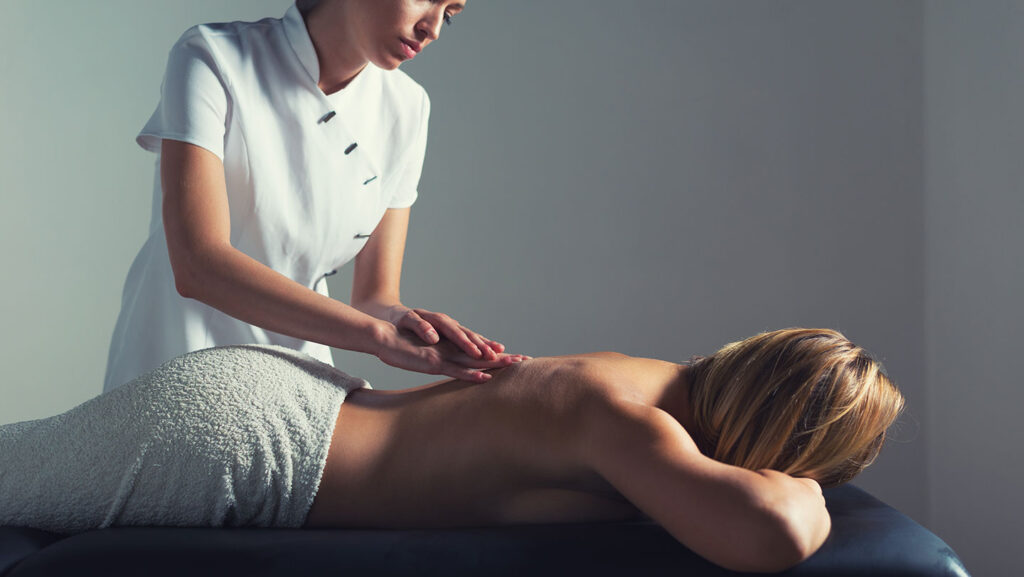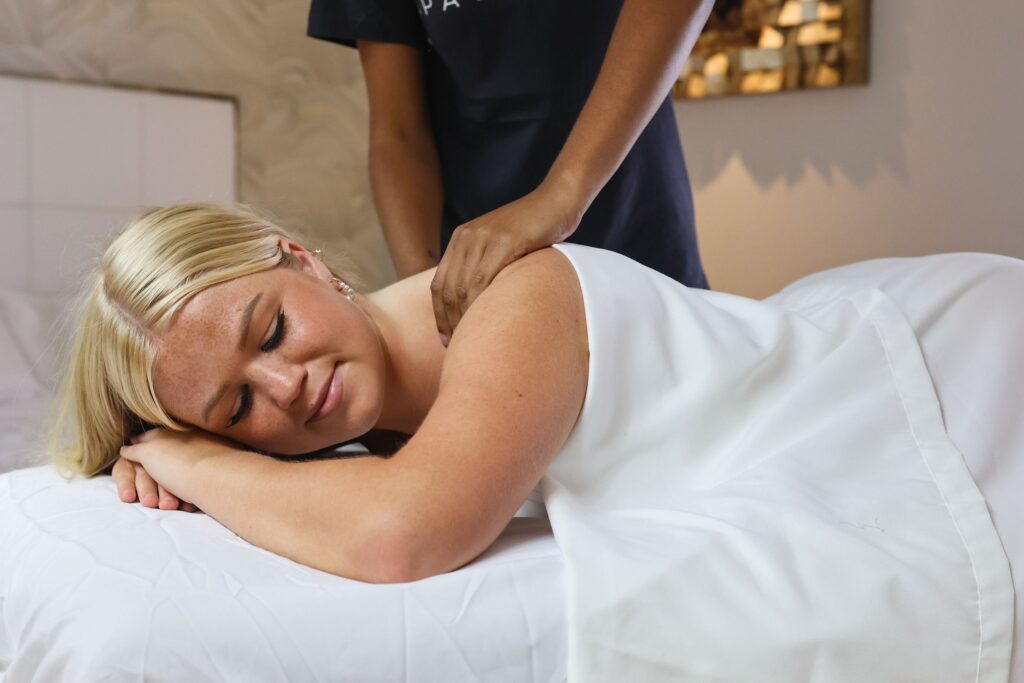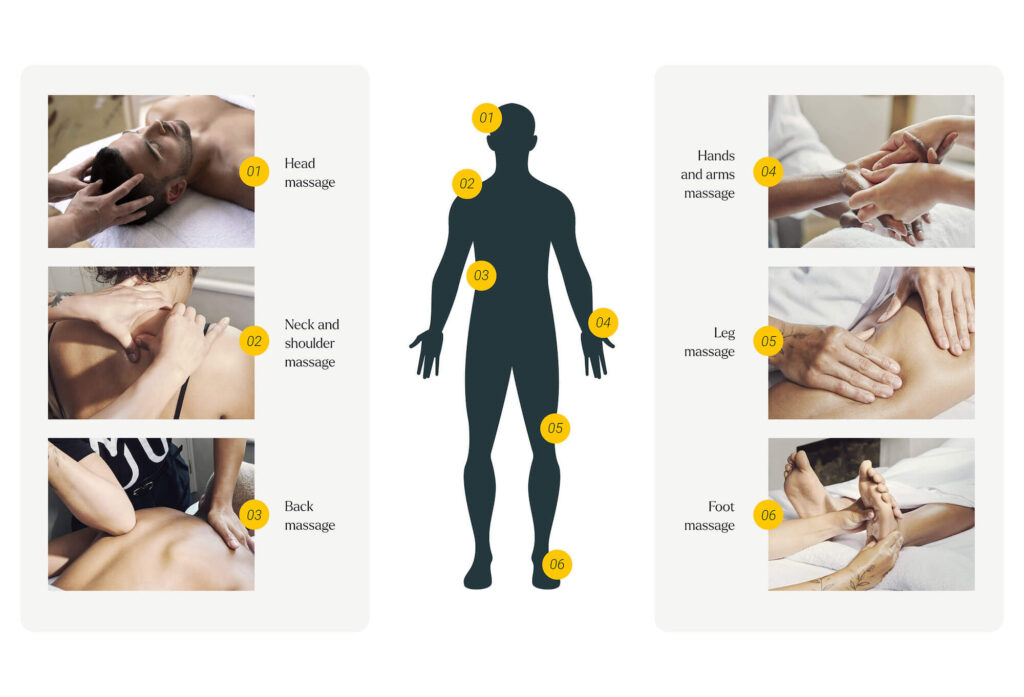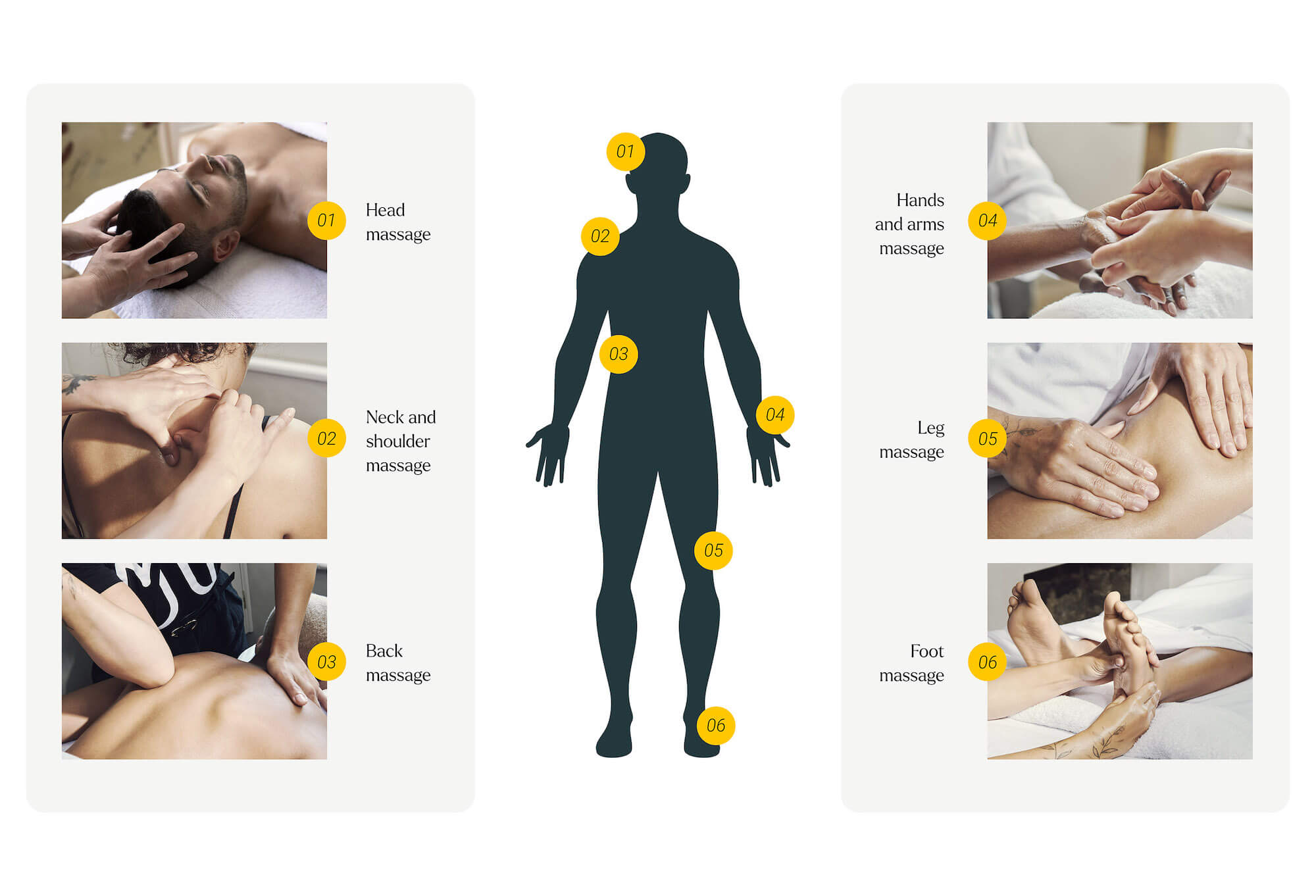Hey there! Ever wondered what really happens at a full body massage? Well, you’re in the right place! In this article, we’re going to walk you through the entire experience and give you a sneak peek into the wonderful world of full body massages.
Curious to know what techniques are involved, how long a session usually lasts, or what benefits you can expect to gain from this relaxing and rejuvenating experience? Don’t worry, we’ve got you covered! We’ll be diving deep into each aspect of a full body massage, from the moment you step into the massage room to the moment you leave feeling like a brand new person. So sit back, relax, and get ready to learn all there is to know about the mysterious magic of a full body massage. Stay tuned for all the details in the upcoming article!
Introduction
If you’ve never had a full body massage before, you may be wondering what to expect. Full body massages are a popular choice for those seeking relaxation, stress relief, improved circulation, pain relief, and enhanced flexibility. In this article, we will walk you through the entire process of a full body massage, from preparing for the session to the massage techniques used and the benefits you can experience. By the end of this article, you will feel more informed and ready to experience the rejuvenating power of a full body massage.
Definition of Full Body Massage
A full body massage is a therapeutic treatment that involves the manipulation of the soft tissues in your body, including muscles, tendons, ligaments, and fascia. The scope of a full body massage covers every part of your body, from head to toe. During a session, a licensed massage therapist uses a variety of techniques to apply pressure, knead, and stretch your muscles. The goal is to release tension, promote relaxation, and improve overall well-being.
Scope and Techniques
The scope of a full body massage encompasses all major muscle groups, including your back, shoulders, neck, arms, hands, legs, feet, and sometimes even your face and scalp. Various massage techniques are employed during a full body massage to achieve different results. These techniques include effleurage, petrissage, friction, tapotement, and vibration. Each technique serves a specific purpose and is tailored to meet your individual needs and preferences.
Benefits of Full Body Massage
Full body massages offer a multitude of benefits for both your physical and mental well-being. The manipulation of soft tissues during a massage increases blood flow and promotes the release of endorphins, natural pain-relieving hormones that help reduce stress and anxiety. The relaxation response induced by a full body massage helps lower heart rate and blood pressure, while also decreasing the production of stress hormones like cortisol. Regular full body massages can lead to improved sleep, enhanced immune function, and increased feelings of overall happiness and well-being.

This image is property of isteam.wsimg.com.
Preparing for a Full Body Massage
Before your full body massage session, there are a few important steps to take to ensure that you have a safe and enjoyable experience.
Choosing a Reputable Massage Therapist
The first step is to choose a reputable massage therapist or massage establishment. Look for licensed and certified professionals who have undergone the necessary training and have a good reputation. Read reviews, ask for recommendations, and inquire about their expertise in full body massage techniques. It’s important to feel comfortable and trust the person who will be providing your massage.
Setting Goals and Expectations
Next, take some time to reflect on your goals and expectations for the massage. Are you seeking relaxation, pain relief, or both? Communicate your intentions clearly to your massage therapist, who can then tailor the session to meet your needs. They will be able to adjust the pressure, focus areas, and techniques based on your preferences and desired outcome.
Completing Intake Forms
When you arrive at the massage establishment, you will be asked to complete intake forms. These forms gather important information about your medical history, current health conditions, injuries, allergies, and any medications you may be taking. This information helps the massage therapist understand your specific needs and any contraindications that may affect the massage techniques used or areas to avoid.
Arrival and Check-In
Once you have completed the necessary paperwork, it’s time to check in for your massage session. This is where the massage experience truly starts.
Greeting and Registration Process
Upon arrival, you will be warmly greeted by the staff at the massage establishment. They will guide you through the registration process, which may involve verifying your appointment details, discussing any special requests or concerns, and answering any remaining questions you may have. This initial interaction sets the tone for the rest of your experience, so it’s important to feel welcomed and attended to.
Discussion of Preferences and Concerns
After registration, you will have the opportunity to discuss your preferences and concerns with your massage therapist. This conversation is crucial in customizing the massage to suit your needs. You can address any specific areas of tension or discomfort, indicate your desired pressure level, and communicate any sensitivities or allergies you may have. Open and honest communication with your massage therapist ensures that your session is tailored to your unique needs and preferences.

This image is property of goodspaguide.co.uk.
Pre-Massage Rituals
Before the massage begins, there are a few pre-massage rituals that take place to ensure your comfort and privacy.
Undressing and Draping Procedures
Once you are in the massage room, you will be given instructions on how to undress and prepare for the massage. Depending on your comfort level, you can undress to your level of comfort. Most people choose to completely undress, while some prefer to leave their underwear on. It’s important to note that you will be properly draped throughout the entire session, with only the area being worked on exposed. Professional massage therapists are skilled at maintaining your privacy and ensuring you feel secure and respected.
Privacy and Modesty Considerations
Privacy and modesty are always considered during a full body massage. When undressing, you will have a private area to do so, ensuring that you feel comfortable and at ease. The massage therapist will adhere to strict professional standards, only exposing the areas of your body that are being worked on at any given time. Your modesty and dignity will be respected throughout the entire session.
Massage Techniques and Movements
Once you are comfortably positioned on the massage table and properly draped, your massage therapist will begin applying different techniques and movements to provide therapeutic benefit and relaxation.
Effleurage
Effleurage is a gentle stroking technique that is often used at the beginning and end of a massage session. It involves using long, sweeping motions with the palms and fingertips to warm up the muscles, increase circulation, and gradually introduce the body to the upcoming deeper massage techniques. Effleurage is soothing, relaxing, and aids in the overall relaxation response.
Petrissage
Petrissage involves kneading, squeezing, and rolling the muscles and tissues, aiming to release muscle tension, break up adhesions, and improve circulation. The therapist will use their palms, thumbs, and fingertips to manipulate the muscles in a rhythmic and controlled manner. Petrissage helps to eliminate muscular knots and tightness, enhance flexibility, and improve range of motion.
Friction
Friction is a deeper technique that focuses on specific areas of tension or knots in the muscles. The massage therapist will use their fingertips, knuckles, or elbows to apply pressure and create friction on the muscle fibers. This technique helps break up scar tissue, increase blood flow to the area, and release trigger points. Friction can be intense but should never be painful. It is crucial to communicate with your massage therapist and provide feedback on the pressure being applied.
Tapotement
Tapotement involves rhythmic movements such as tapping, pounding, or cupping the muscles. This technique uses the palms, fists, or cupped hands to create a percussive effect. Tapotement helps stimulate the muscles, invigorate circulation, and awaken the nervous system. It is often used as an energizing technique and is not typically applied for prolonged periods.
Vibration
Vibration involves a shaking or oscillating motion applied to certain muscle groups. The therapist may use their hands or fingers to create rapid movements that produce a vibrating sensation. Vibration helps relax the muscles, increase blood flow, and relieve tension. It is commonly used on larger muscle groups, such as the back and thighs, to promote deep relaxation.

This image is property of static.wixstatic.com.
Focus Areas and Pressure Levels
During a full body massage, the therapist will customize the session based on your individual needs and preferences. They will target specific focus areas and adjust the pressure intensity to ensure a satisfying and effective massage experience.
Customizing the Massage Based on Client Needs
Your massage therapist will take into account your goals, concerns, and any specific issues or areas of tension you may have. They will use this information to design a massage that caters to your unique needs. Whether you want a full body massage with equal focus on all areas or prefer more attention on specific areas, such as your back or shoulders, your therapist will adjust the treatment accordingly.
Targeting Specific Muscle Groups
If you have specific muscle groups that need extra attention or have chronic pain or tension in certain areas, your therapist can focus on those areas during the massage. They will use a variety of techniques to address the specific needs of those muscles and provide targeted relief.
Adjusting Pressure Intensity
The pressure intensity of a full body massage can be adjusted to your liking. You can communicate your desired pressure level with your therapist, whether you prefer a light and relaxing touch or a deeper pressure that targets stubborn knots and tension. It’s important to speak up and provide feedback during the session, as your therapist wants to ensure your comfort and satisfaction.
Special Considerations
There are a few special considerations to keep in mind when it comes to full body massages.
Pregnancy
If you are pregnant, it’s important to consult with your healthcare provider before scheduling a full body massage. While massage can be beneficial during pregnancy, certain techniques and positions may need to be modified to ensure the safety and comfort of both you and your baby. Seek out a massage therapist who specializes in prenatal massage, as they will have the necessary training and expertise to provide a safe and effective session.
Injuries or Medical Conditions
If you have any injuries or medical conditions, it’s crucial to inform your massage therapist before the session begins. Certain conditions may require modifications to the massage techniques used or may be contraindicated altogether. By sharing this information upfront, your therapist can adapt the session to ensure your safety and avoid exacerbating any existing conditions.
Allergies or Sensitivities
If you have any allergies or sensitivities to oils, lotions, or scents, be sure to communicate this to your massage therapist. They can accommodate your needs by using unscented products or alternatives that won’t trigger an allergic reaction. Your comfort and well-being are their top priority, so feel free to voice any concerns you may have.

This image is property of images.squarespace-cdn.com.
Benefits of Full Body Massage
The benefits of a full body massage extend far beyond the duration of the session. Regular sessions can have long-lasting positive effects on your physical and mental well-being.
Relaxation and Stress Reduction
One of the primary benefits of a full body massage is relaxation and stress reduction. The soothing touch of a skilled massage therapist helps activate the body’s relaxation response, leading to a decrease in heart rate, blood pressure, and the production of stress hormones. This promotes deep relaxation, calms the mind, and helps alleviate anxiety and tension.
Improved Circulation
The techniques used during a full body massage help increase blood flow throughout the body. This enhanced circulation delivers oxygen and nutrients to the muscles, promotes the elimination of toxins, and aids in the healing process. Improved circulation can also contribute to healthier and more vibrant skin.
Pain Relief
Full body massages can provide significant pain relief for those suffering from chronic pain conditions or muscular tension. The manipulation of soft tissues helps release endorphins, which are natural pain-relieving hormones. Additionally, targeted techniques, such as friction and petrissage, can break up scar tissue, loosen tight muscles, and alleviate discomfort.
Enhanced Flexibility
By stretching and manipulating the muscles during a full body massage, flexibility and range of motion can be improved. The combination of kneading, stretching, and deep pressure helps increase joint mobility and lengthen muscle fibers, resulting in enhanced flexibility and a greater range of motion.
Conclusion
Now that you know what happens at a full body massage, you can approach your next session with confidence and excitement. Remember to choose a reputable massage therapist, communicate your goals and concerns, and enjoy the multitude of benefits a full body massage has to offer. Whether you seek relaxation, stress relief, pain management, or improved flexibility, a full body massage can be a powerful tool in your journey towards optimal health and well-being.

This image is property of a.storyblok.com.
